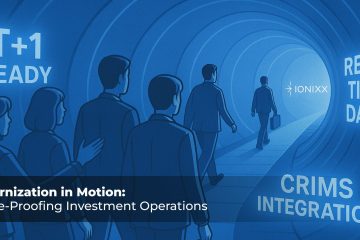Charles River Investment Management Solution (CRIMS) has become a cornerstone platform for asset managers, traders, and compliance teams across the buy-side. It’s robust, modular, and highly configurable – but as anyone who’s gone live knows, successful deployment is only the beginning.
The real value of CRIMS is unlocked post-implementation – when workflows are tuned to mirror the unique rhythms of the firm, not just the default system logic. That’s when firms begin to see whether their teams are working with the platform – or around it.
This article is for platform owners, operations leaders, and heads of investment technology navigating a key decision point in the post-go-live phase:
Should we build something custom – or adapt to what CRIMS offers out of the box?
It’s a decision that affects not just workflow efficiency, but long-term platform stability, upgrade paths, and user adoption. Let’s explore how to make the right call.
The Misalignment Between CRIMS Defaults and Real-World Workflows
CRIMS is designed to serve a broad spectrum of asset managers. It offers compliance logic, order management, real-time IBOR feeds, and approval workflows that can support most firms reasonably well. But no two teams operate exactly the same way.
We’ve seen cases where workflows break down despite a successful implementation:
- Traders route orders manually because built-in sequencing doesn’t reflect execution timing.
- Compliance teams export data just to reformat it for pre-checks.
- Portfolio managers ignore the UI altogether and revert to spreadsheets.
These are not system shortcomings; they are signs of misalignment between business processes and platform behavior.
When Adapting Makes More Sense
If your workflow requirements are close to what CRIMS supports natively, start by adapting. That includes:
- Using standard compliance rule builders
- Leveraging built-in IBOR refresh cycles
- Sticking to role-based routing
- Keeping report logic inside the platform
These paths reduce maintenance, ensure smoother upgrades, and support faster onboarding. You don’t earn points for building something custom when a well-configured native feature already solves the problem.
When to Consider Building Custom Workflows
Custom workflows make sense when business logic diverges significantly from what CRIMS is built to handle. Here are signs you may need to build:
- The same data is used differently across roles (e.g., PMs vs. traders vs. compliance).
- Workflow sequencing changes based on trade type, asset class, or market.
- Off-platform approvals or risk sign-offs are part of daily activity.
- Proprietary models, datasets, or rules need to be integrated mid-stream.
Trying to force-fit these into native CRIMS logic can lead to workarounds, inefficiencies, and operational risk.
Build vs. Adapt: A Strategic Decision Matrix
Here’s how we help clients frame the decision:
| Question | If yes…. |
| Is the process repeatable across teams? | Adapt |
| Does it require frequent business changes? | Build with flexibility |
| Does it span roles with different data needs? | Consider custom interfaces |
| Is misalignment creating real risk or delays? | Build purposefully |
Proven Patterns from the Field
From our work with capital markets firms, these approaches consistently deliver strong outcomes:
- Custom approval workflows tied to deal type and client mandate
- Smart UI overlays that change what’s visible based on user role
- Exception-based workflows to escalate only what matters
- Interfaces that plug into external risk engines or ESG data models
These solutions minimize friction while preserving CRIMS’ core integrity.
Conclusion
CRIMS offers a solid foundation, but realizing its full potential requires alignment between the platform and your firm’s unique workflows.
Making the right build-vs-adapt decision can lead to faster execution, fewer errors, better compliance visibility, and a more scalable operating model. Customizations should be strategic, not reflexive.
At Ionixx Technologies, we specialize in post-go-live optimization, workflow redesign, and targeted enhancements that unlock real ROI from Charles River IMS. Our certified CRIMS consultants, solution architects, and engineering teams understand capital markets and the realities of front-to-back integration.
Whether you’re streamlining approvals, integrating smarter logic, or simply reducing inefficiencies, we can help align CRIMS to how your firm really works.
Let’s start with a workflow diagnostic. Reach out to us at info@ionixxtech.com


